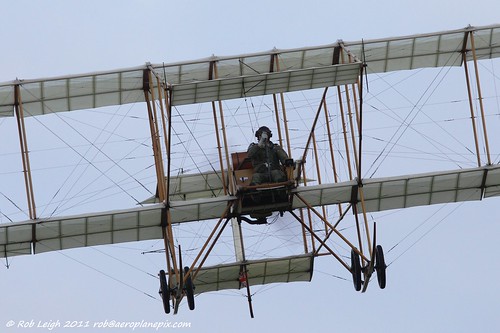

First Airplane In Singapore
Thursday, 16th March 1911
The British-made Bristol Boxkite biplane was the first plane that took flight in Singapore on 16 March 1911, piloted by Mr. Joseph Christiaens. Interestingly, the plane arrived not by air, but in crates by sea, together with the pilot. It was then assembled by a squad of Royal Engineers. An airstrip or landing area had to be created for three days of demonstration flights at the Singapore Turf Club Race Course at Farrer Park. It was capable of just over 300km of flight. Passengers, one at a time, paid $50 each for the privilege of flying.

Photo Credit: Flickr.
The Bristol Boxkite was the first aircraft designed and built by the British and Colonial Aeroplane Company (later to be known as the Bristol Aeroplane Company). It was a biplane of wire-braced wood construction based on designs by Henri Farman powered by a 50 hp (37 kW) Gnome rotary engine driving a single pusher propeller. It was one of the first aircraft types to be built in quantity, and as the machine was used by Bristol for instruction purposes at their flying schools at Larkhill and Brooklands many early aviators first flew in a Boxkite, and a number of aviation 'firsts' were achieved using it.
Background: The British and Colonial Aeroplane Company, Ltd was founded in February 1910 by Sir George White, chairman of the Bristol Tramway and Carriage Company, along with his son Stanley and his brother Samuel, to commercially exploit the fast-growing aviation sector. Unlike most aviation companies at the time, which were started by enthusiasts with little financial backing or business ability, British and Colonial was from its outset well funded and run by experienced businessmen. Sir George established the business as a separate company from the Bristol Tramway Company because he considered that such a venture would be seen as too risky by many shareholders, and the new company's working capital of £25,000 was subscribed entirely by Sir George, his brother, and his son. Nevertheless, as might be expected, the affairs of the two companies were closely connected, and the company's first premises were two former tram sheds suitable for aircraft manufacture at Filton leased from the Bristol Tramway Company. Additionally, key personnel for the new business were recruited from the employees of the Tramway Company, including George Challenger as chief engineer and works manager. A flying school was also established, with premises at Brooklands, then the centre of activity for British aviation, where Bristol rented a hangar, and at Larkhill on Salisbury Plain, where in June 1910 a school was established on 2,248 acres (9.10 km2) of land leased from the War Office. These flying schools came to be regarded as some of the best in the world by 1914, when 308 of the 664 Royal Aero Club certificates issued to date had been gained at the Company's schools.
1920 Update: As products from British and Colonial had always been referred to by the name 'Bristol' and this was formalized, when British and Colonial was liquidated and its assets became the Bristol Aeroplane Company, Ltd.
1959 Update: Bristol was forced by Government policy to merge its aircraft interests with English Electric, Hunting Aircraft, and Vickers-Armstrongs to form the British Aircraft Corporation (BAC).
1977 Update: BAC was nationalised along with Scottish Aviation and Hawker Siddeley to form British Aerospace (BAe). BAe later became part of the now-privatised BAE Systems.
